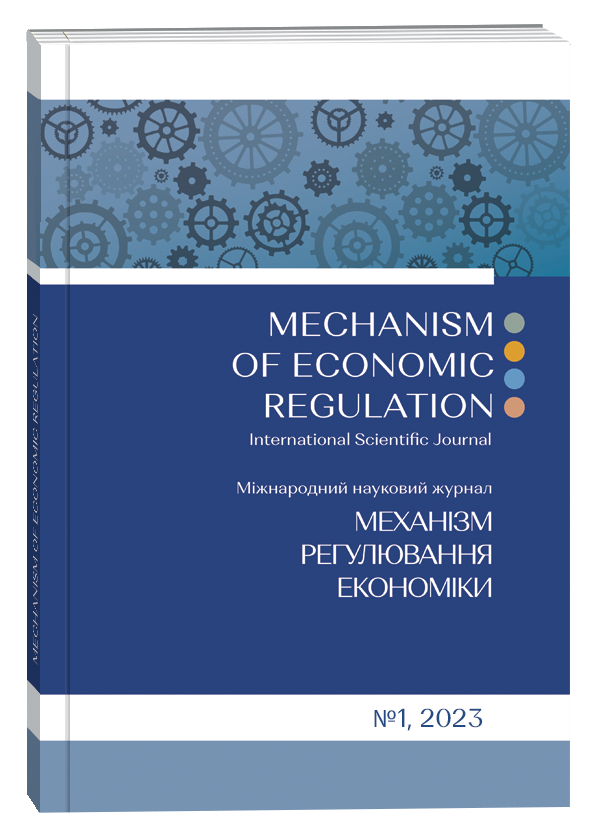ECONOMIC ANALYSIS OF ENERGY EFFICIENCY OF CHINA'S AND INDIA'S NATIONAL ECONOMIES
Abstract
The development of society is highly dependent on energy. However, the extensive use of power causes global problems such as resource exhaustion and climate warming. China and India are typical fast-growing developing countries whose economic advancement relies on traditional energy consumption. To realize the vision of sustainable development for these states, it is necessary to study the nations' economic efficiency of power use. Based on the analysis of energy consumption and gross domestic product trends in China and India from 1990 to 2019, this paper discusses the changes in the energy consumption index per unit of gross domestic product. The authors concluded that the power consumption in China and India is mainly concentrated in the industry, residential, and transport sectors. Divided by resource types, the energy consumed by China comes primarily from coal, oil products, and electricity, while the power consumed by India is mainly from coal, oil products, biofuels and waste. Since both countries mostly use coal and oil products which belong to fossil fuels, they emit large amounts of carbon dioxide, endangering the environment quality. Given this, China and India should focus on green power development. China's total energy consumption is much larger than India's, and China's gross domestic product is much larger than India's. However, China's energy consumption per unit of gross domestic product is less than India's. The higher the energy consumption per unit of gross domestic product is, the higher the dependence of economic development on energy is. The authors' suggestions are to develop non-fossil energy sources and adjust the energy mix, recycle solid wastes, and encourage carbon trading, climate investment and financing in the states to reach sustainable development targets.
References
Banerjee, S. G., Barnes, D., Singh, B., Mayer, K., & Samad, H. (2014). Power for all: electricity access challenge in India. The World Bank Publications. Retrieved from: https://elibrary.worldbank.org/doi/abs/10.1596/978-1-4648-0341-3 (accessed July 10, 2022).
Economic strategies for the development of society: collective monograph (2020). Illiashenko K., Bezverkhnia Y. (Eds.). Іnternational Science Group. Boston (USA): Primedia eLaunch.
Energy consumption management: industry and social sphere: monograph (2018). O. M. Telizhenko, M. I. Sotnyk (Eds.). Sumy: Mriya-1.
Gielen, D., Boshell, F., Saygin, D., Bazilian, M. D., Wagner, N., & Gorini, R. (2019). The role of renewable energy in the global energy transformation. Energy Strategy Reviews, 24, 38–50. DOI: https://doi.org/10.1016/j.esr.2019.01.006
IEA: The International Energy Agency (2022). Retrieved from: https://www.iea.org/data-and-statis (accessed July 10, 2022).
International economic relations and sustainable development: monograph (2017). O. Prokopenko, T. Kurbatova (Eds.). Ruda Śląska : Drukarnia i Studio Graficzne Omnidium.
Junfeng, Li (2021). China power enterprise management: China's current development status and prospects. Retrieved from: https://m.bjx.com.cn/mnews/20210209/1135811.shtml (accessed July 10, 2022).
Niu, S., Ding, Y., Niu, Y., Li, Y., & Luo, G. (2011). Economic growth, energy conservation and emissions reduction: a comparative analysis based on panel data for 8 Asian-Pacific countries. Energy Policy, 39(4), 2121–2131. DOI: https://doi.org/10.1016/j.enpol.2011.02.003
Otsuka, A., & Goto, M. (2018). Regional determinants of energy intensity in Japan: The impact of population density. Asia-Pacific Journal of Regional Science, 2(2), 257–278. DOI: https://doi.org/10.1007/s41685-017-0045-1
Power supply for educational institutions: efficiency and alternatives: collective monograph (2020). M. Sotnyk (Ed.). Hamilton, Canada, Accent Graphics Communications & Publishing.
Sineviciene, L., Sotnyk, I., & Kubatko, O. (2017). Determinants of energy efficiency and energy consumption of Eastern Europe post-communist economies. Energy & Environment, 28(8), 870–884. DOI: https://doi.org/10.1177/0958305X17734386
Social inequality as a global challenge: collective monograph (2021). M. P. Bkhandari, H. O. Shvindina (Eds.). Denmark, River Publishers.
Sotnyk, I. M. (2016). Energy efficiency of Ukrainian economy: problems and prospects of achievement with the help of ESCOs. Actual Problems of Economics, 175(1), 192–199.
Sotnyk, I. M., Dehtyarova, I. B., & Kovalenko, Y. V. (2015). Current threats to energy and resource efficient development of Ukrainian economy. Actual Problems of Economics, 173(11), 137–145.
The energy consumption per unit of GDP. Retrieved from: https://wiki.mbalib.com/wiki/Energy_consumption_per_unit_of_GDP (accessed July 10, 2022).
The World Bank (2022). Retrieved from: https://data.worldbank.org/ (accessed July 10, 2022).
Vitenu-Sackey, P. A., & Hongli, J. (2020). Financial inclusion and poverty alleviation: the contribution of commercial banks in West Africa. International Journal of Business, Economics and Management, 7(1), 57–70. DOI: https://doi.org/10.18488/journal.62.2020.71.57.70
Zhang, Y.-J., & Chen, M.-Y. (2018). Evaluating the dynamic performance of energy portfolios: Empirical evidence from the DEA directional distance function. European Journal of Operational Research, 269(1), 64–78. DOI: https://doi.org/10.1016/j.ejor.2017.08.008


